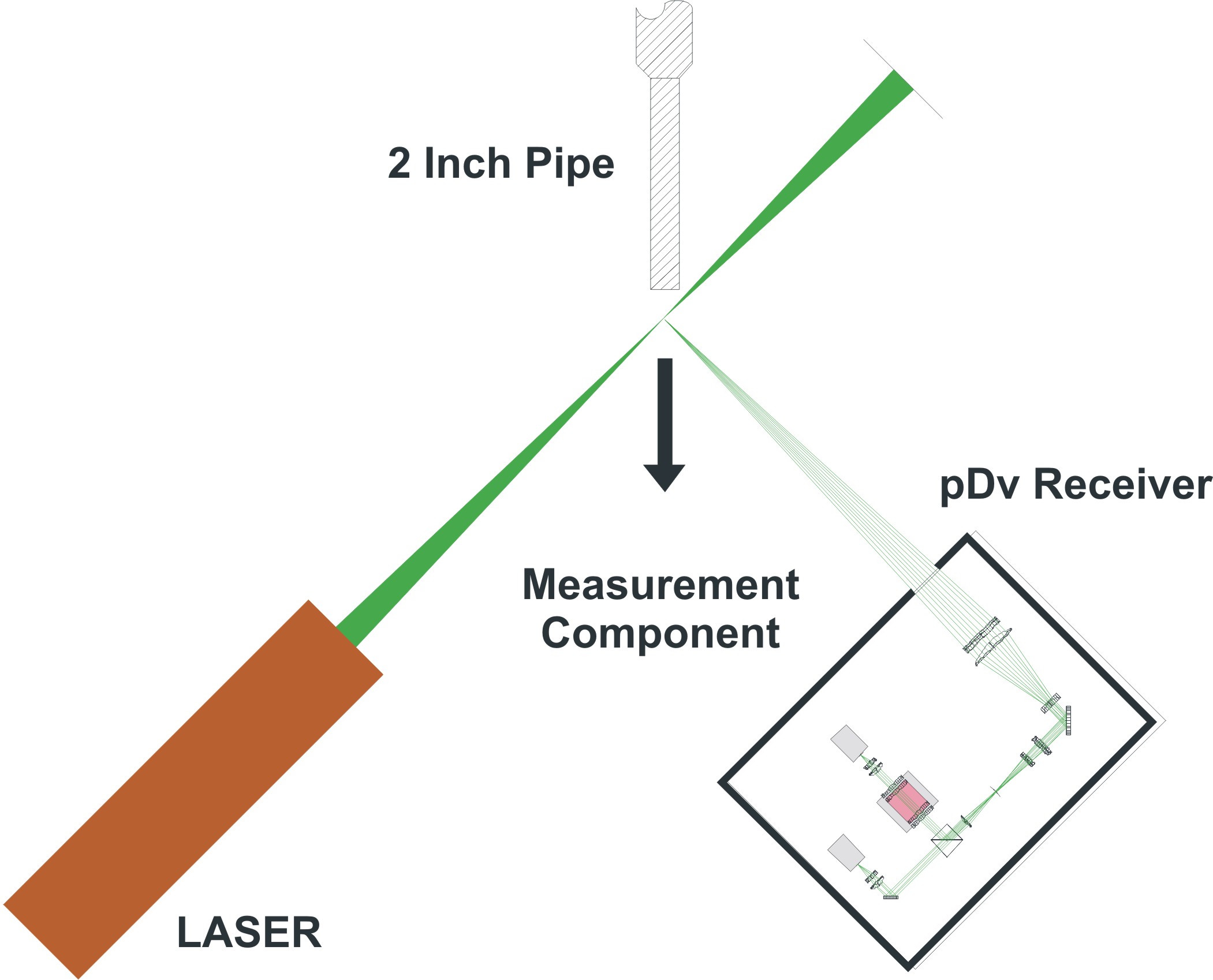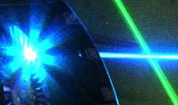|
Point Doppler Velocimetry (pDv)
In order to develop efficient and quiet aircraft, aerodynamic researchers require flow measurement instruments to characterize flow fields about wind tunnel models, in jet flows and to validate Computational Fluid Dynamic (CFD) predictions. Instruments capable of making these measurements non-intrusively are preferred since they do not contaminate the flow being investigated.
To address the needs of aerodynamicists, the Point Doppler Velocimeter (pDv) is being developed in the Advanced Measurements and Data Systems Branch (AMDSB) at NASA Langley Research Center. pDv is a laser-based instrument capable of making velocity measurements at a point from light scattered as small smoke particles pass through a laser beam. At the heart of the pDv technique are Iodine Vapor Cells (IVCs) that act as frequency discriminators. Collected scattered light passing through the IVC is absorbed to varying degrees based on optical frequency. The extent of absorption is related to the Doppler frequency shift of the original laser beam resulting from particle motion. The Doppler frequency shift realized is a function of the velocity of the particle(s) that scattered the light, thus providing a direct measurement of flow velocity. pDv overcomes limitations of other laser-based techniques which suffer from particle dynamics and/or sensor response limitations. The ability to make measurements from multiple particles enables uniform sampling of the photomultiplier(s) output. This holds the potential for making desired spectral and cross-correlation measurements.
pDv Optical Configuration

Presently pDv is undergoing laboratory investigations required to mature the technology for deployment in flow research facilities. pDv measurements are being compared to measurements obtained using a pitot probe and a hot-wire anemometer. The pitot probe is an accepted standard for measuring the average flow velocity at a point while the high-response hot-wire is the accepted technique for measuring the spectral content of a flow. This investigation is ongoing as researchers attempt to prove the physics behind the technique, validate the employed electronics, optical and software systems and improve measurement accuracy. |




